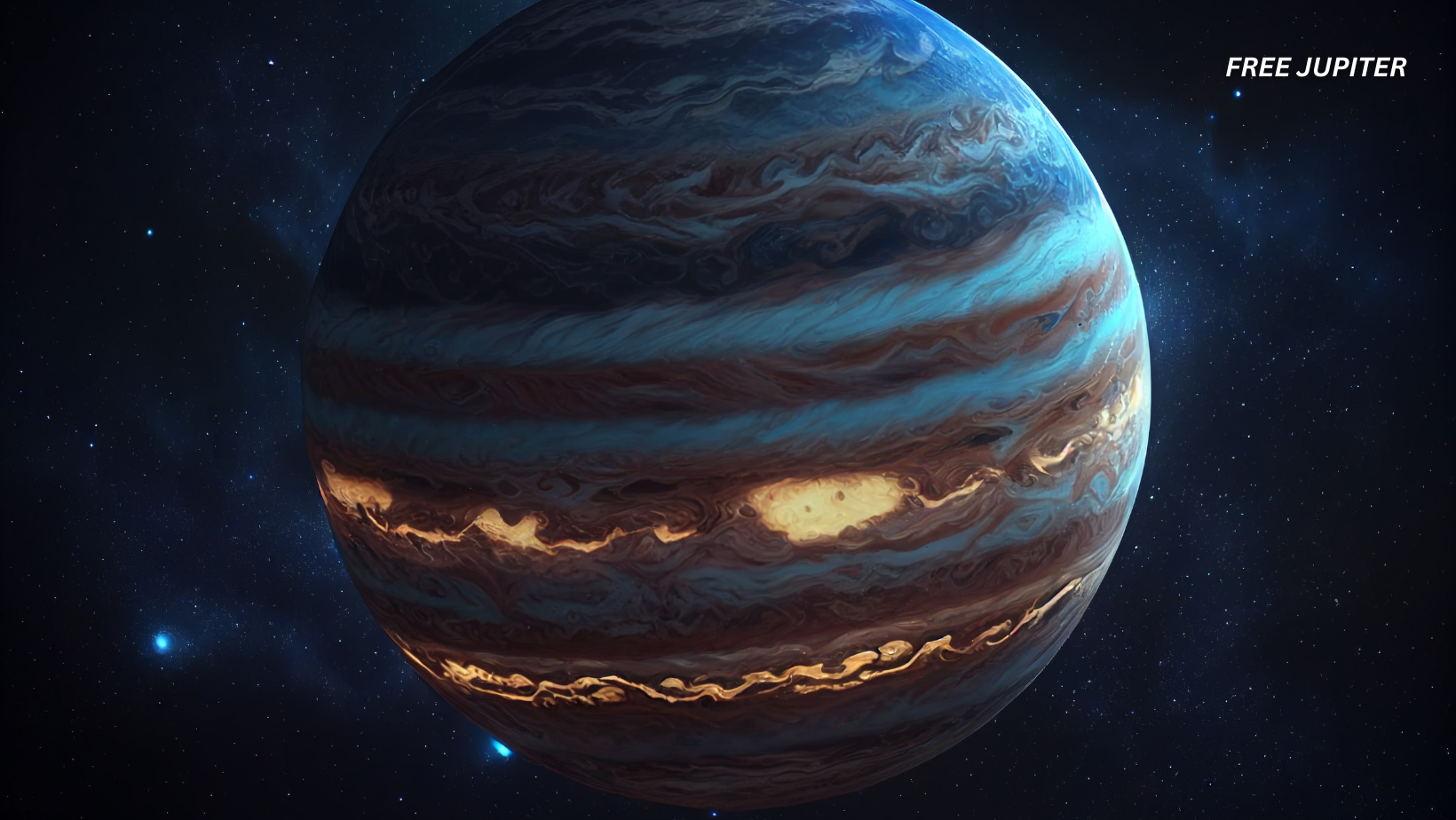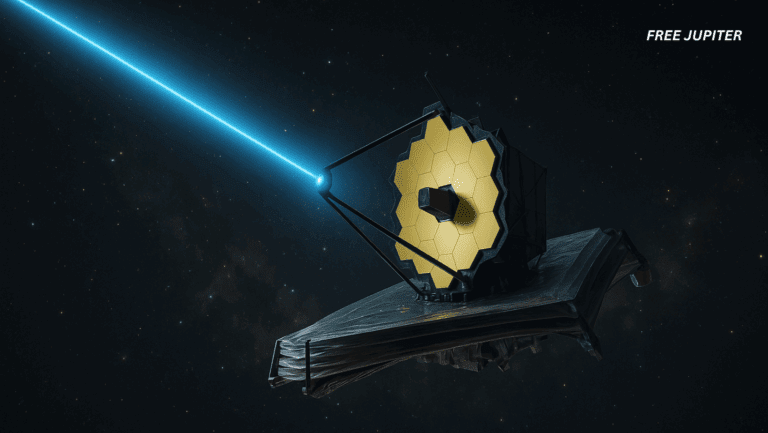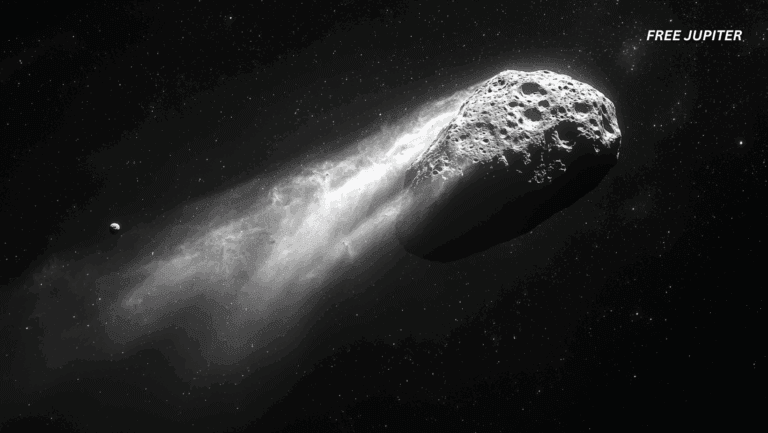When we think of Jupiter—the mighty gas giant ruling over our solar system—we often picture its swirling clouds, iconic red spot, and a size so colossal that more than 1,300 Earths could fit inside. But what really lies at its heart? For decades, scientists believed they had a decent guess: a dense, compact core forged in a violent cosmic event. Yet new research is shaking up this long-standing idea, and the truth appears even stranger than anyone expected.
A Planet of Secrets
Jupiter is no ordinary planet. As the largest in our solar system, it exerts a gravitational pull strong enough to influence the orbits of other worlds. Its sheer mass and composition—mostly hydrogen and helium—make it a kind of time capsule from the earliest days of planetary formation. If we could unravel its internal structure, we might learn not only how Jupiter came to be, but also gain clues about how countless other gas giants across the universe formed.
For years, planetary scientists thought they had a working theory: Jupiter started with a solid core that formed quickly and then captured a massive envelope of hydrogen and helium. To explain certain puzzling observations, researchers proposed something even more dramatic—a giant planetary collision billions of years ago.
Read more: Multi-Billion-Year-Old ‘Coral’ Found on Mars by NASA
The Old Theory: A Catastrophic Impact
According to this long-standing theory, Jupiter’s odd internal structure resulted from a titanic smash-up. The story goes like this: early in the solar system’s history, Jupiter wasn’t alone in its neighborhood. Another large planet—roughly the size of Earth or even bigger—may have crashed into young Jupiter at incredible speeds. The aftermath? A shattered core, blended with exotic materials, leaving behind a planet with a “fuzzy” or diluted interior.
This so-called “giant impact theory” became the leading explanation for why Jupiter doesn’t have a simple, sharply defined core. Instead, data from NASA’s Juno spacecraft, which has been orbiting Jupiter since 2016, revealed something far more complex: layers of hydrogen and other elements gradually merging into each other, almost like a cosmic smoothie. The impact theory seemed like the perfect fit—until now.
The New Challenge: When Simulations Don’t Agree
A team of international researchers decided to put this idea to the test. Using advanced computer simulations, they recreated scenarios where massive planetary collisions occur under extreme conditions. They wanted to see if such an event could really produce the strange, blended core Juno detected.
The results? Surprising—and a little disappointing for fans of dramatic cosmic crashes.
Even under the most extreme assumptions, the simulations didn’t produce a core that looked anything like Jupiter’s. Instead of creating a smooth gradient of materials, the impact left behind distinct, separate layers. Think of a layered cake rather than a blended milkshake. This finding effectively pokes a hole in the impact theory, suggesting Jupiter’s mysterious core didn’t come from a single cataclysmic event after all.
So, What Really Happened Inside Jupiter?
If not a giant collision, then what? The new research offers a different, and arguably more elegant, explanation: Jupiter’s core formed gradually, over millions of years, as heavy and light elements mixed during its long evolution.
In other words, Jupiter might not have had a violent childhood—at least not one that shaped its interior. Instead, its complex core could be the natural outcome of slow, steady accumulation of materials during planetary growth. Over time, as Jupiter pulled in gas and dust, heavier elements sank inward, but not in a perfectly organized way. Instead, they mingled with lighter materials, creating the “dilute” or “fuzzy” core we see evidence of today.
This idea shifts our understanding of giant planet formation. Rather than being dominated by rare, dramatic events, their interiors might owe their complexity to a more patient, drawn-out process.
What Does Juno Have to Do With It?
NASA’s Juno mission has been central to this mystery. By orbiting Jupiter and studying its gravity field, Juno gave scientists an indirect but highly detailed view of what’s happening deep inside the planet. Its data hinted at something unexpected: Jupiter doesn’t have a neat, compact core like Earth. Instead, it has an extended region where heavy elements are mixed with hydrogen and helium. This revelation challenged earlier models—and inspired studies like the one we’re discussing now.
Read more: Our Planet Was Once a Giant Water World, Researchers Say
Saturn Joins the Conversation
Interestingly, Jupiter’s neighbor Saturn might share this strange trait. Observations suggest that Saturn, too, has a diluted core rather than a sharp boundary between its inner layers. If both of our solar system’s gas giants exhibit this structure, then the gradual formation theory gains even more credibility. It would mean that what we see in Jupiter and Saturn isn’t a cosmic fluke—it’s likely the norm for massive planets.
Beyond Our Solar System
The implications don’t stop at Jupiter and Saturn. Astronomers have discovered thousands of exoplanets, many of which are gas giants orbiting other stars. If Jupiter’s core formed gradually, the same might hold true for these distant worlds. This could revolutionize how we model planetary systems across the galaxy, helping scientists predict which planets might be hospitable—or at least understand their histories more accurately.
Why This Matters
You might wonder why anyone should care about what’s inside a planet we’ll never set foot on. The answer lies in the bigger picture: planetary formation is one of the great unsolved puzzles in science. By figuring out Jupiter’s origin story, we inch closer to understanding how our entire solar system—and countless others—came into existence. These insights even shape our search for life beyond Earth, since planetary environments depend on how worlds form and evolve.
A Planet That Refuses to Be Simple
As Durham University planetary scientist Thomas Sandnes put it, simulating such impacts is like watching a cosmic experiment unfold on-screen. His team discovered that even when Jupiter experiences one of the most violent events imaginable—a head-on planetary collision—it still doesn’t end up looking the way Juno says it does today. “The impact literally shakes the planet to its core,” Sandnes said, “just not in the right way.”
Luis Teodoro, a coauthor from the University of Oslo, added that Saturn’s similar structure further weakens the giant impact theory. “The fact that Saturn also has a dilute core strengthens the idea that these structures are not the result of rare, extremely high-energy impacts,” he explained. Instead, it points to a slower, more universal process in the formation of giant planets.
Jacob Kegerreis of the SETI Institute summed it up well: “Giant impacts are a key part of many planets’ histories, but they can’t explain everything.”
Read more: Astronomers Have Found A ‘Tatooine-Like’ Planet Orbiting Two Stars
Final Thoughts: Jupiter Still Has Secrets
Jupiter remains a planet of contradictions. For all its size and influence, its innermost secrets are still out of reach—at least for now. What we do know is this: our solar system’s biggest world didn’t form in a single dramatic moment but likely through countless subtle steps over time. It’s a humbling reminder that the universe doesn’t always favor fireworks. Sometimes, it prefers slow, quiet artistry.
The next time you glance at images of Jupiter’s majestic bands or its iconic red storm, remember that beneath those swirling clouds lies a heart more complex—and more mysterious—than we ever imagined. And with every new discovery, we’re rewriting the story of how worlds are born.
Image: Freepik.










